Port Arthur is the definition of Tasmania Gothic. Walking into the site, during the day or at night, you are almost overcome with the atmosphere of foreboding as the echoes of the site’s dark past creep over the hillside. Professional Ghost tours at Port Arthur are available by guided tour only. The site is open at night only for these pre-booked tours. I would highly recommend booking this tour as the storytellers that guide you through the area at night really make history come alive. And there is nothing that compares to touring the prison at night time.
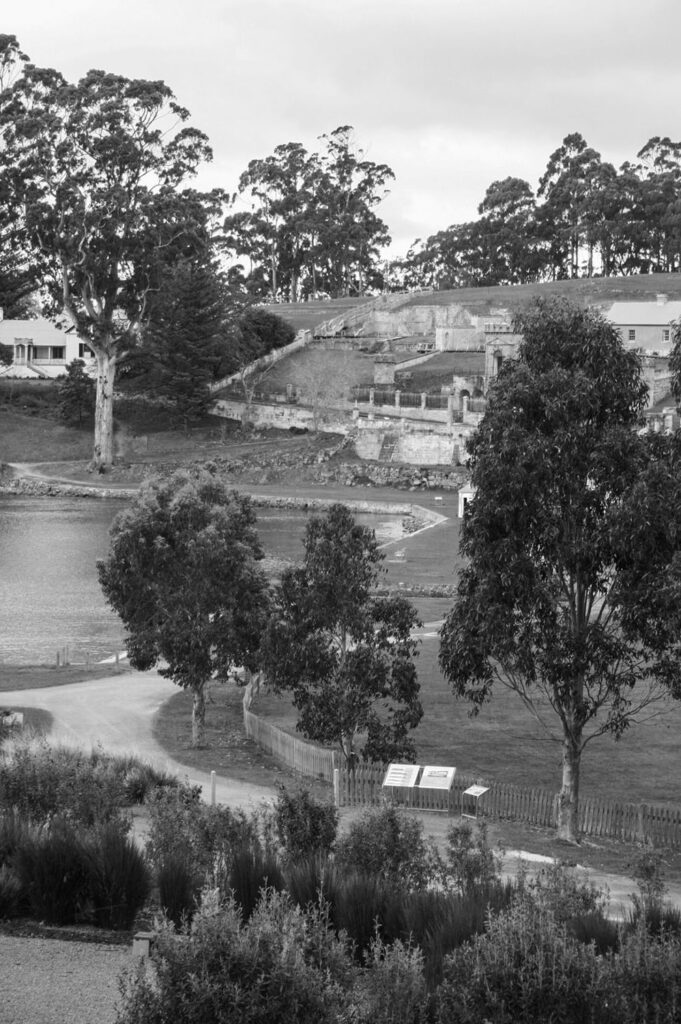
Self-Guided Ghost Tour
But these tours book up SUPER fast, and if you haven’t planned this in advance, you might miss out on being able to explore the site at night. At the time of writing this, tours are fully booked at least 4 months in advance! So I wanted to provide a bit of history and go into all those ghost stories to those who are still interested in learning more about the paranormal activities that take place here. You can read this self-guided tour during your daytime visit, and trust me, this site is so spooky that even in the light of day, these stories will send a chill down your spine.
Port Arthur Motor Inn & Restaurant
Another idea if you can’t make it onto the prison’s grounds at night is to head over to the Port Arthur Motor Inn & Restaurant. If you dine inside the restaurant, you’ll get a great view of the prison at night, and if you’re brave enough to stay the night, you will even have a clear picture of the complex from your veranda. Sitting out on the balcony, you can look out at the site and read over these stories and imagine being there yourself! Whether or not you believe in ghosts, the stories that go along with the tales recounted here provide insight into the prison’s history and the beliefs that the earliest settlers here clung to.
Tasmanian Gothic
Tasmanian Gothic is a literary genre that merges Gothic fiction traditions with the history and natural features of the Tasman landscape. The stories deal with the themes of horror, mystery and the uncanny. Many people think that the dark convict history and subsequent ghost stories were the most significant influence on the development of the genre.
The strong belief the Tasman people had in ghosts was influenced by the Irish and Celtic immigrants. These criminals and settlers were the first Europeans to populate the island. They brought a strong tradition of believing in the supernatural. They even brought with them their own ghost stories from their home country that were adapted to their new Australian landscape over time.
Another unlikely influence on Tasmania gothic was Chinese immigrants, who also had a strong connection to the supernatural. Chinese immigrants were brought to Tasmania, mainly in the North East, to help mine tin in those communities. The European workers had little skill in mining, whereas the Chinese immigrants were experienced workers. Although there were only 1000 immigrants who came over from China, their influence was tremendous. They would often outnumber their European counterparts 10 to 1 in those regions. Chinese folklore features many ghosts, monsters, and other mythological creatures derived from the supernatural nature of Buddhism.
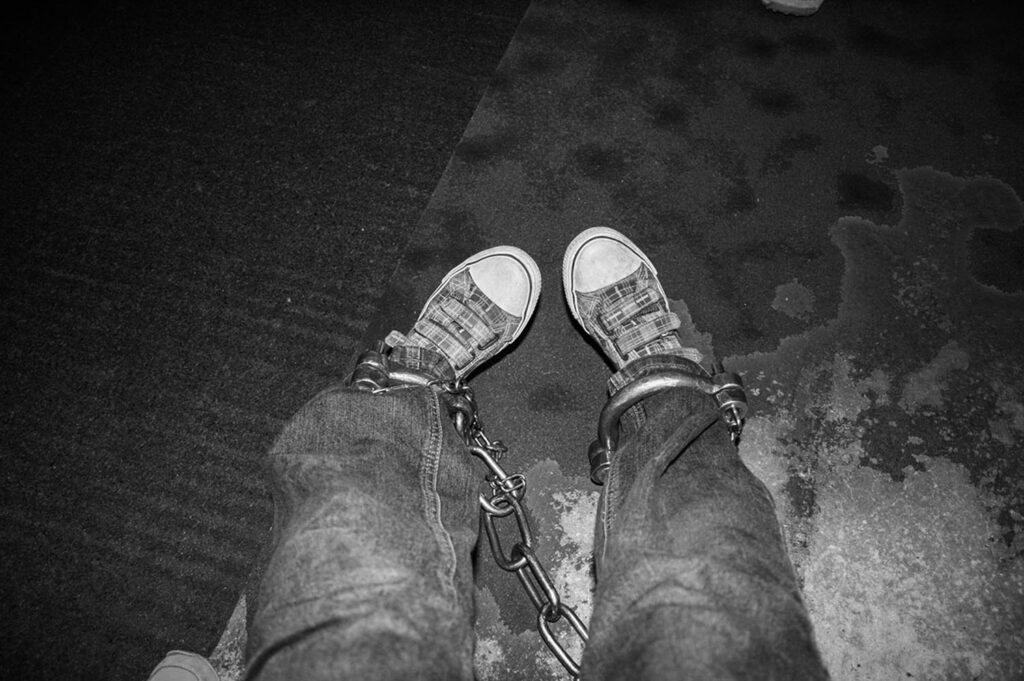
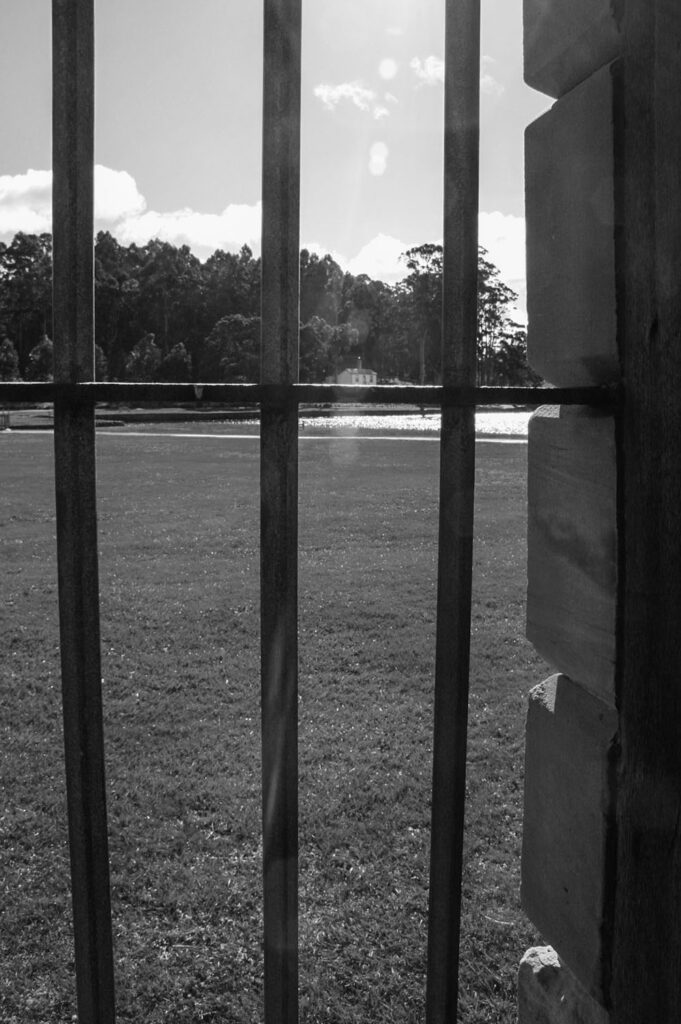
History of Port Arthur
In 1830, Governor Sir George Arthur was sent to Van Diemen’s Land to build a penal settlement for convicts from Britain and Ireland. Van Diemen’s Land was the name given to Tasmania when Dutch explorers claimed the land and named it to honour Anthony van Diemen, the current Dutch Governor-General. At the site, the most hardened criminals came to stay. The worst of the worst as being sent to the other side of the world was seen as the most severe punishment, save for execution. For this reason, Port Arthur had some of the strictest security measures and most brutal punishments.
But Port Arthur was also a working prison. Authorities wanted to see these convicts reformed through a combination of religions, education and training in a variety of trades. This meant that the prison was known as an “industrial prison”. Port Arthur began as a timber camp; the location was rich with forests and close enough to Hobart’s main port to ship out the timber. After 15 years, the prison built a shipyard and began constructing shops. The prisoners also produced flour from the mill and made nails, bricks and boots all for sale to ensure the prison was profitable.
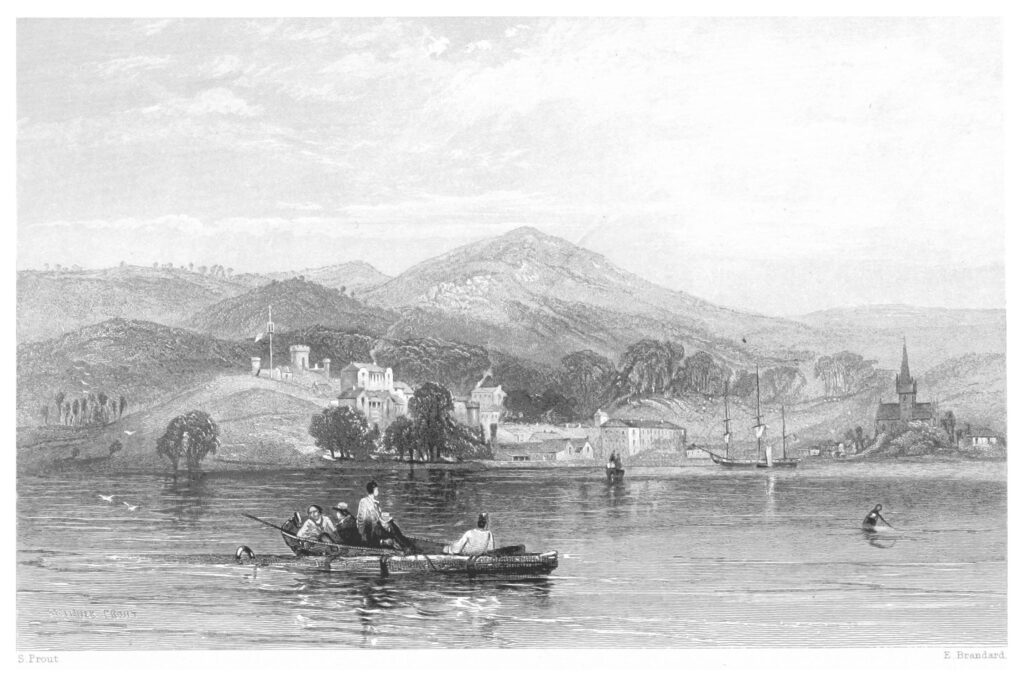
Life in the Prison
Port Arthur was reputed to be an inescapable prison. It was located on this peninsula that is surrounded on all sides by supposedly shark-infested waters. The only way to the mainland is across a 30-meter wide isthmus guarded by both soldiers, half-starved dogs and man-made traps. Only two prisoners were known to have escaped. One failed escape took place when a prisoner disguised himself using a kangaroo hide.
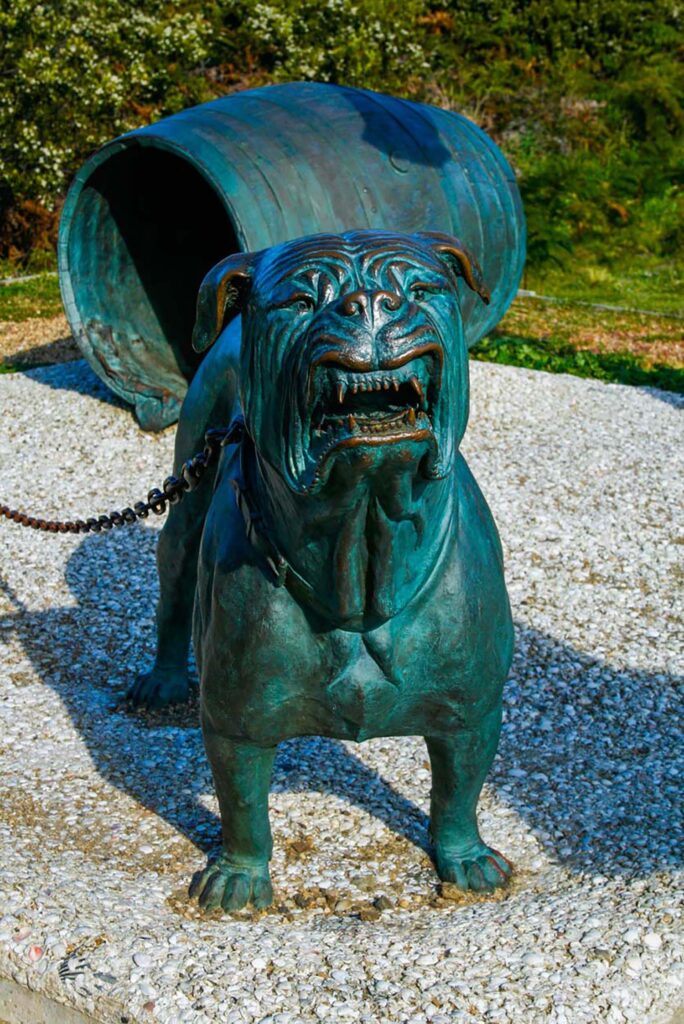
The prisoners’ conditions were so dire that they would even murder another inmate just to escape their situation. Murder was punishable by death and some would prefer this to staying any longer at Port Arthur. Savage floggings and brutal chain gangs were reported by the prisons when they returned back to England. It had a genuine reputation of being “hell on earth.” Any prisoner who attempted to escape would suffer 100 lashes. The prisoners would get horrible infections in their squalid living conditions. Often, these infections got so bad, that they lead to the death of the inmates.
But it wasn’t the corporal punishments that were the worst part of life at the prison. No, Port Arthur was one of the first Australian prisons to implement the “silent system”. This meant placing prisoners into individual cells where they were kept quiet for 23 hours a day. They got to leave their cell for one hour a day but were made to wear a hood anytime they were outside to ensure they never saw another human face. Although it wasn’t their intended outcome, this sent many prisoners mad. Eventually, an asylum was built to deal with the mental illness created by these inhumane conditions.


The Old Church
The old stone Church at Port Arthur was cursed almost from the moment the stones were laid. The stones were hewn from rocks by the young boys on Point Puer. Those poor boys were subjected to such horrible conditions, living on this isolated island away from the rest of the settlement. This was done to ensure these young criminals weren’t influenced by the older inmates. And that they wouldn’t disturb their path towards righteousness.
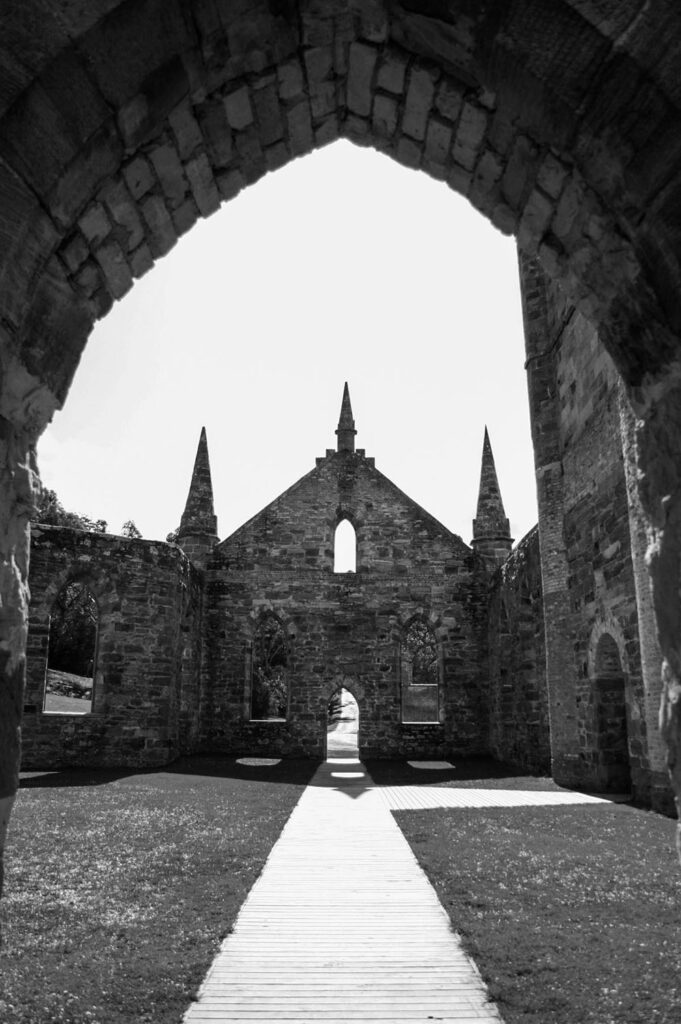
Curse of the Point Puer Prison Boys
But as they were almost forgotten about, away from the mainland, their living conditions were dire and no one took any notice. Many young children died due to diseases that ran rampant and terrible malnutrition. These sick and starving boys were forced to perform hard labour. They were made to hew, carve and haul stones for the church’s construction. No doubt this work was exhausting especially when they were barely being fed a proper diet. One can only imagine how many boys died trying to prepare the materials for the church. The haunted souls of these young men cursed the construction for the start.
Murder at the Church
To built the church, Port Arthur used prisoners as their free labourers. One day, a violent prisoner got into an argument with another labourer. Without another thought, the prisoner picked up a pickaxe and struck the other man in the head three times. When he was done, he placed the pickax down and whispered, “I am satisfied.” Blood was splattered all over the stone walls. Although the blood was washed from the walls the ivy which grows over the rest of the church would never grow where the man’s blood had been spilled.
Church Bell Tower
Residents at Port Arthur have reported seeing strange figures in the bell tower at night. This is despite the fact that there are no stairs or even a floor up the bell tower. The bells (that are now stationary on the ground) have been known to ring out randomly, despite no ringer being present. Perhaps this is a spirit from the prison, pleading for help, unknowing of the fact that he is already dead.
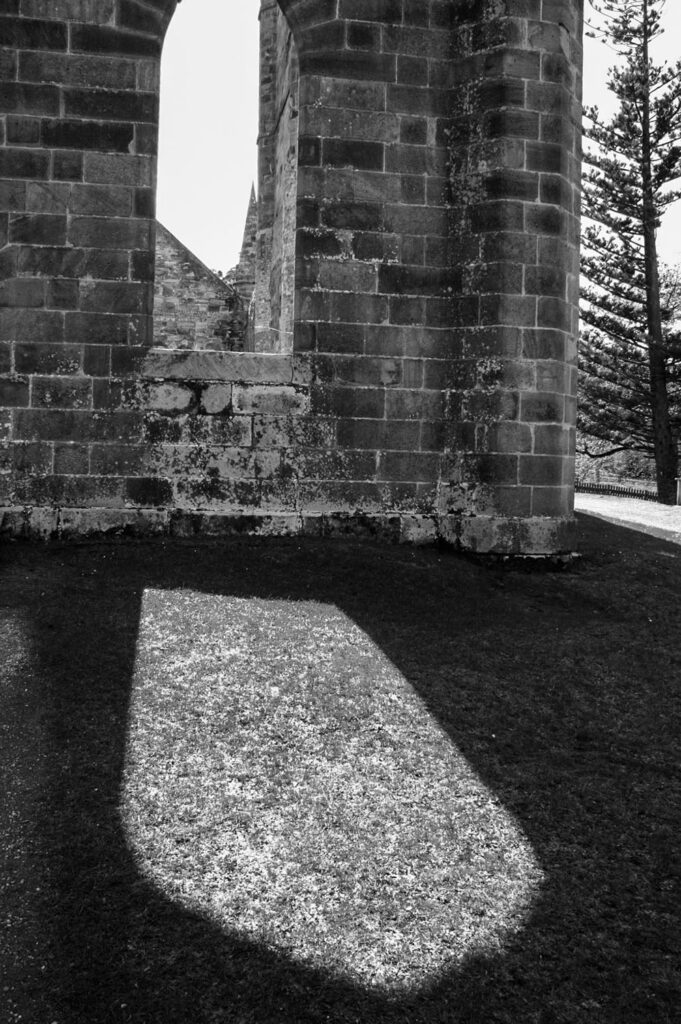
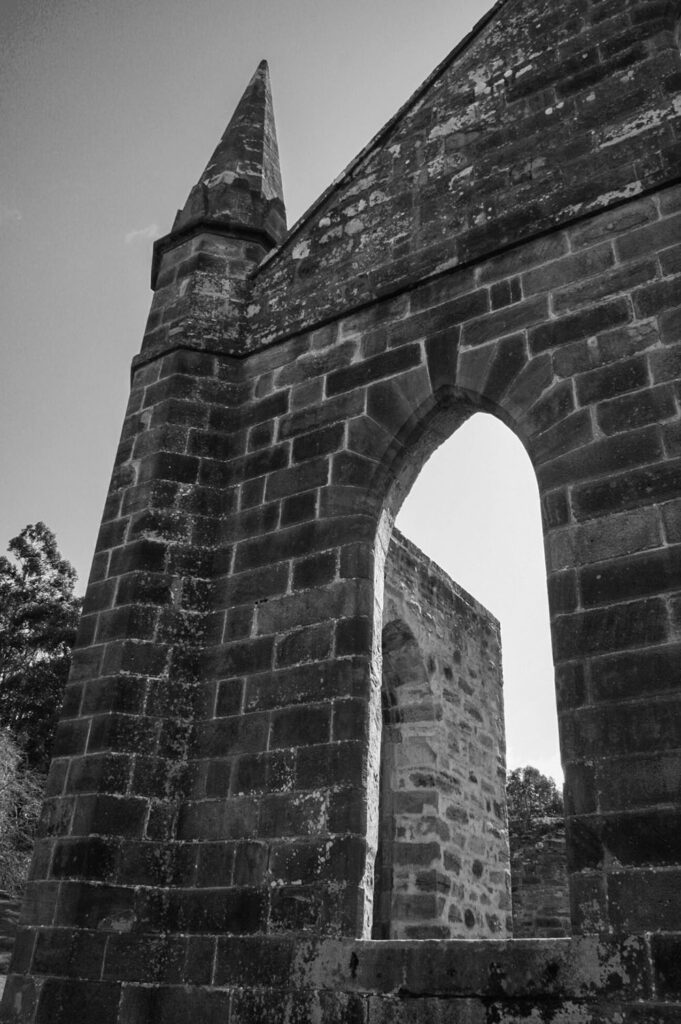
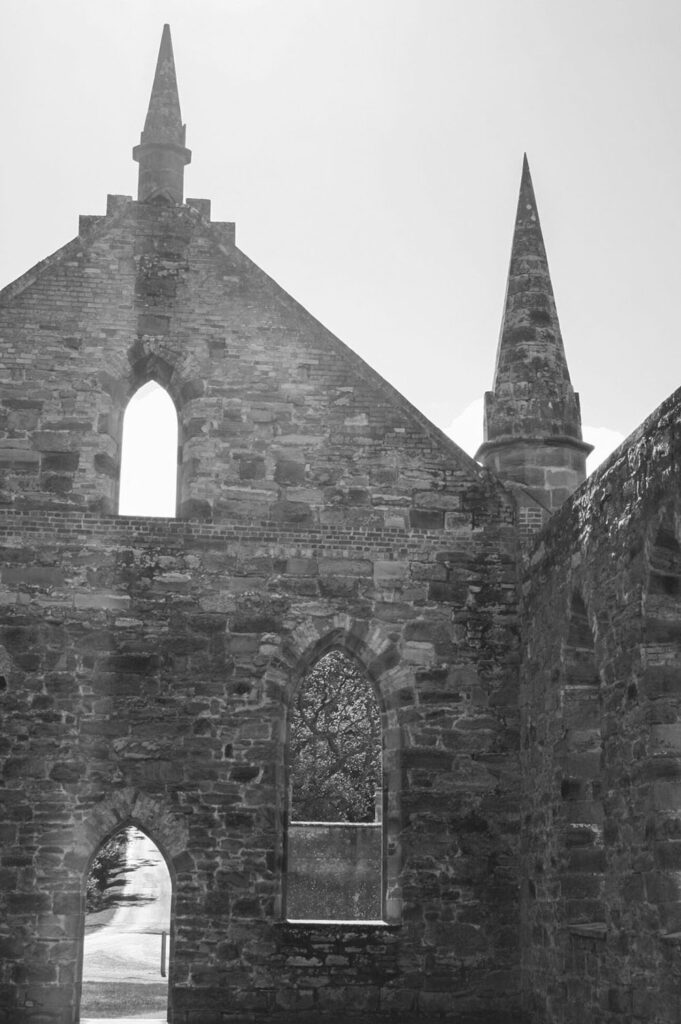
Parsonage Building
The Parsonage, easily spotted by its brightly painted terracotta exterior, was built in 1842 for Reverend Durham and his family. Today, this building is one of the most active paranormal spots on the site. After Reverend Durham left, another family moved in in 1857. Reverend George Eastman arrived with his wife, Louise and their 10 children. The children were poorly behaved and were notorious for destroying the gardens and surrounding prison farming land. The inmates worked so hard to kee in proper running order, and the children seemed to take pleasure in wrecking it. Their carefree and rude attitude angered the inmates greatly. The children, perhaps influenced by their father, had little regard for the prisoners.
Reverend George Eastman died in 1870 in this very house. After his death, people began to see ghostly apparitions appear in the Parsonage almost right after. A strong sulphuric odour would fill the home, yet a source for it never could be located. Moaning and other strange noises would be heard at night. Lights would even flash on and off, even when no one was home. Although Eastman was a good man, he died very young. After his death, he left his wife and 10 children to fend for themselves, as they were not cared for by the ministry or the government. The widow and her children lived a difficult life of poverty until their ultimate end. Eastman’s ghost perhaps returns to morn for his tortured family.
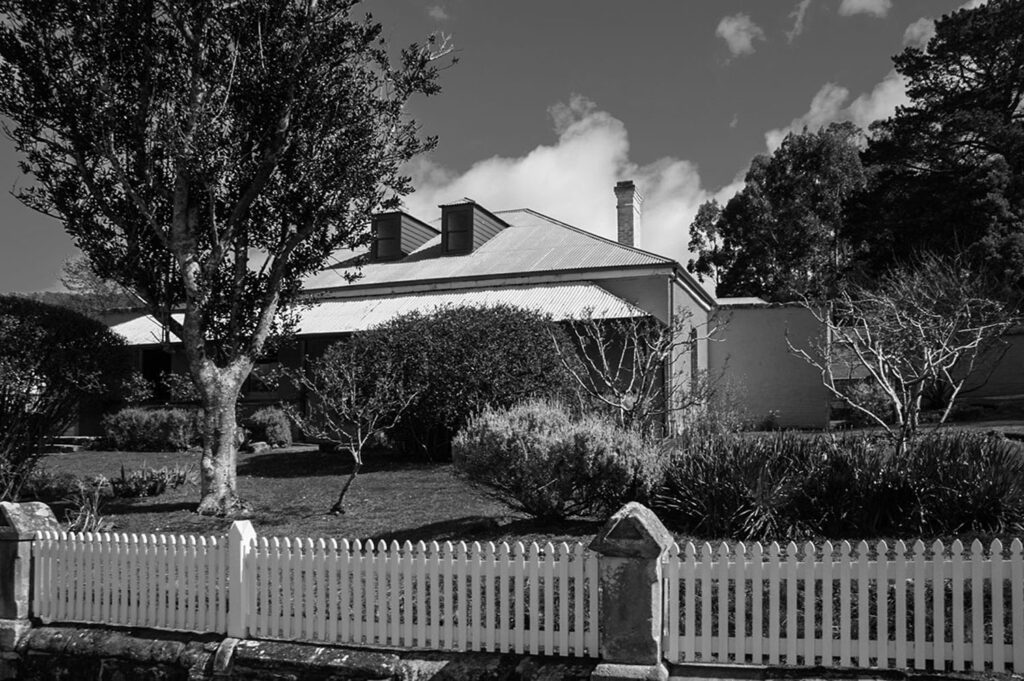
Junior Medical Officer’s Home
Across from the church, there is a street with a series of houses called Officer’s Row. This was where several of the most senior officers lived. The houses were separated from the prison area to ensure the workers felt like they weren’t living with the inmates. The first house on this row is the Junior Medical Officer’s home. It was here that the medical Officer would tend to prisoners.
The basement of the Medical Officer’s Home was where the Senior Surgeon’s dissection room was located. It was here that former inmates’ dead bodies were opened up and examined. But their bodies weren’t simply dissected for routine autopsies. Sometimes, medical experiments were taken out on the dead bodies, even though the prisoners hadn’t given their consent to have this done. Many religious men believed that this was a desecration of their soul, but the illegal experiments continued despite this.
Walking into the old dissection room, the temperature seems to drop drastically, more than it should fall in an underground basement. People have reported seeing eyes on the walls and bloody faces appearing on the stones, only to disappear instantly. Perhaps these are the wronged prisoners’ spirits, still waiting to get their revenge on the surgeon.
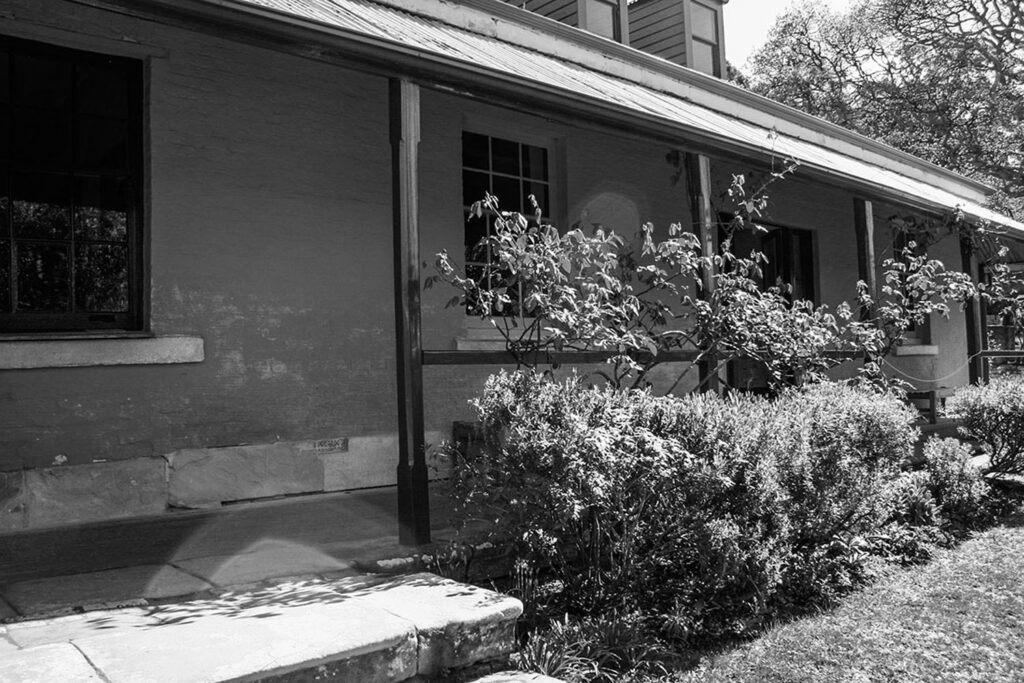
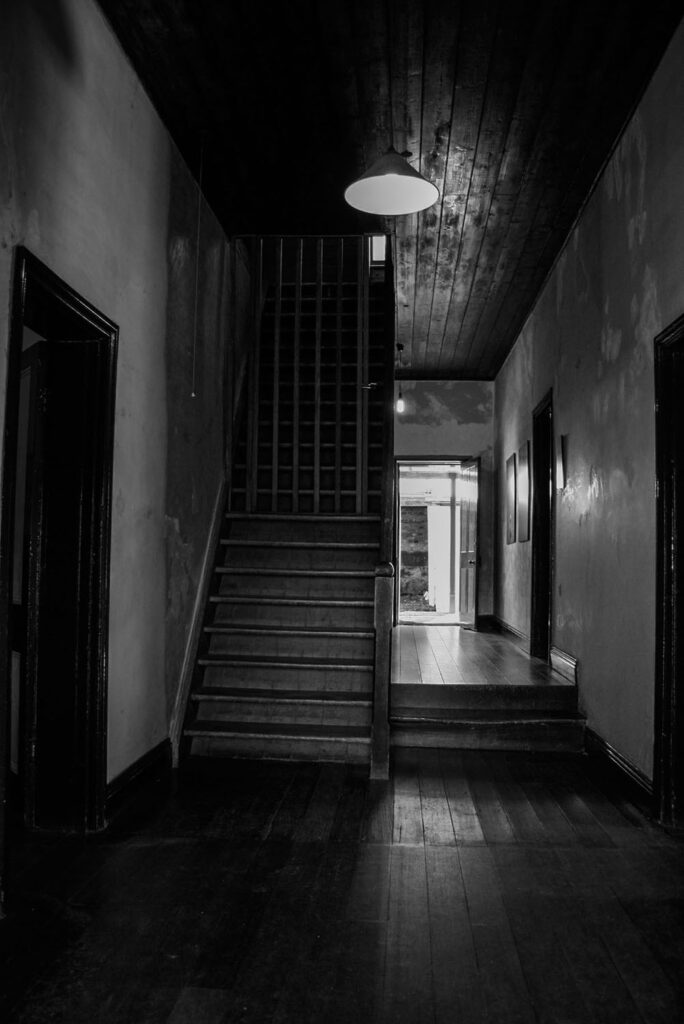
The Lady in Blue
The most famous ghost of Officer’s row is that of a melancholy woman who lost her baby. She has been called the ‘Lady in Blue‘ after her iconic blue dress she wears. One of the Officer’s wives suffered a horrific miscarriage while living here. It’s said that she still searches the grounds for her unborn child. It is rumoured that the baby could not be buried with the mother on the Isle of the Dead. This was because the child had not been baptized and back then, you could not bury an unbaptized child on consecrated land. Because she could not rest for eternity with her beloved lost child, she still wanders the grounds aimlessly. Searching endlessly in the hopes of being reunited.

Asylum
The Asylum was home to prisoners who were too mentally ill to serve inside the central prison. They were left here to souls still reside in these walls. People hear footsteps at night, and lights turn on and off on their own. But the two most famous ghosts of the Asylum aren’t of prisoners at all, but of a young girl and an older woman who roam the halls. After the prison closed in 1877, the asylum building was refurbished and turned into a school. Although we don’t know why this school teacher and her pupil haunt these halls one can imagine they themselves might have been tortured by the ghost of old inmates.


Separate Prison
Besides the Asylum, we find the Separate Prison. The Separate Prison was where prisoners would come to suffer under the torments of solitary confinement. The Commandants of Port Arthur believed in psychological punishment over corporal punishments (although that was prevalent as well). In these silent cells, prisoners would spend 23 hours alone. Whenever they left their cells, they were forced to wear a hood and made to stay quiet at any cost. The guards even learned sign language to ensure the inmates never heard the sound of human voices.
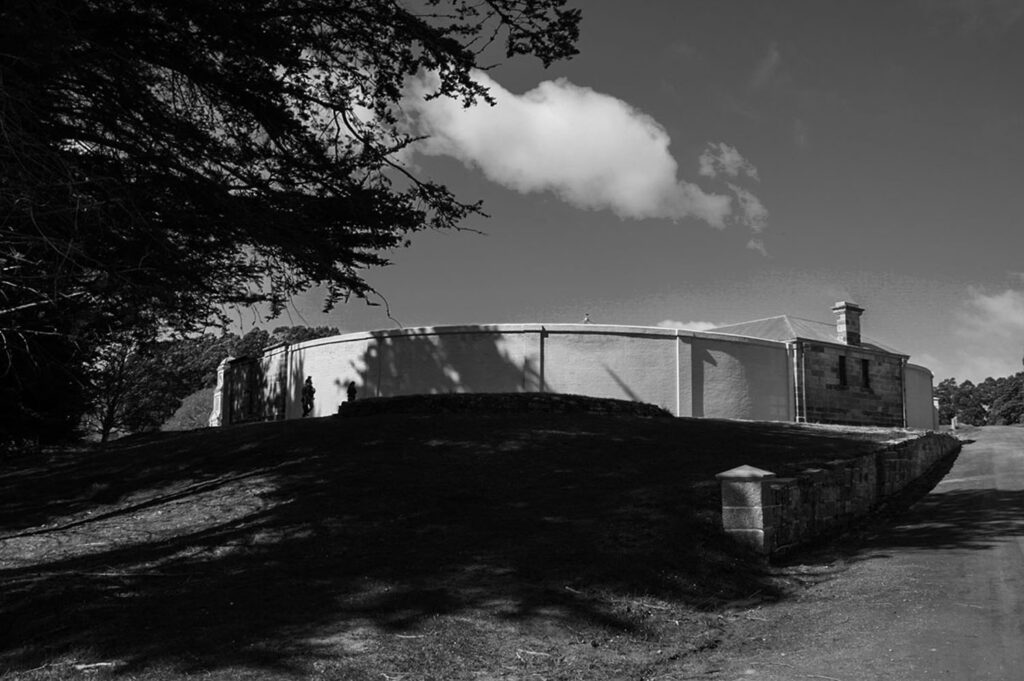
This kind of “treatment” was thought to give the prisoners time to reflect on their misdoings. This kind of penitence was presumed to guide them into a life of reform. But it usually did no such thing, and many prisoners were driven mad by the treatment. Once the inmates went mad, they were simply moved from the Separate Prison over the Asylum. There, they would eventually die from maltreatment or malnutrition or simply neglect. They never even had a chance to leave Port Arthur.
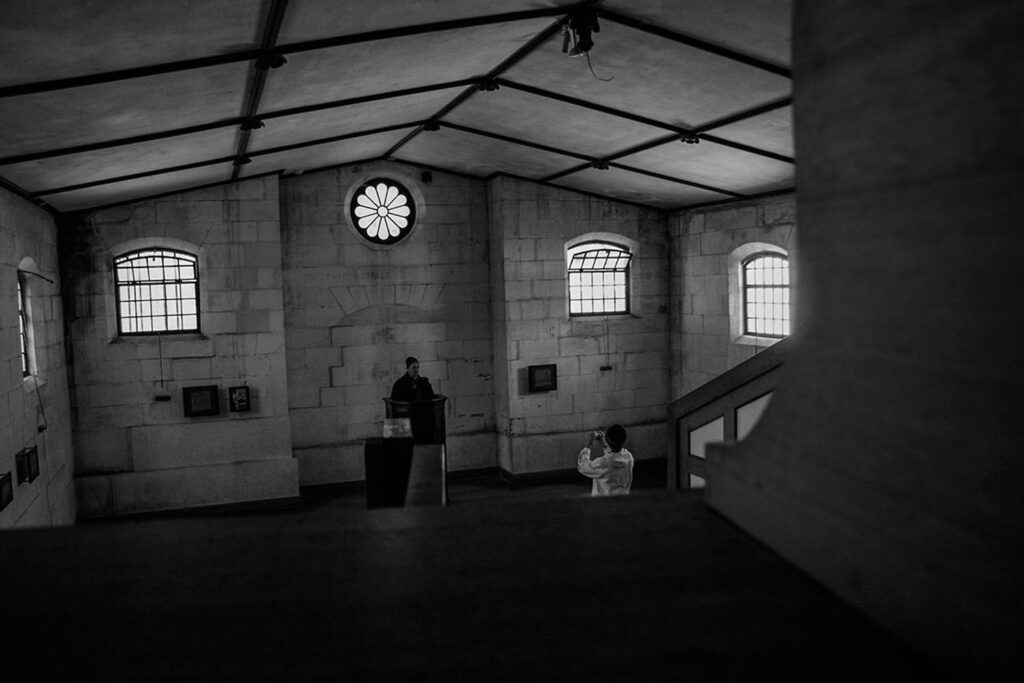
Famous Prisoner Ghosts
One famous prisoner, William Carter, hung himself from his cell in 1867. He felt this was his only escape from the “silent system.” When people think death is their only escape, you know how dark things must have been inside Port Arthur’s walls. You can still visit Carter’s cell today. Many people report the feeling of overwhelming sadness when inside, as if the spirit was still lingering. People who come to the Separate Prison have been known to feel like someone is touching them when no one is there. People have even been scratched by phantom hands.

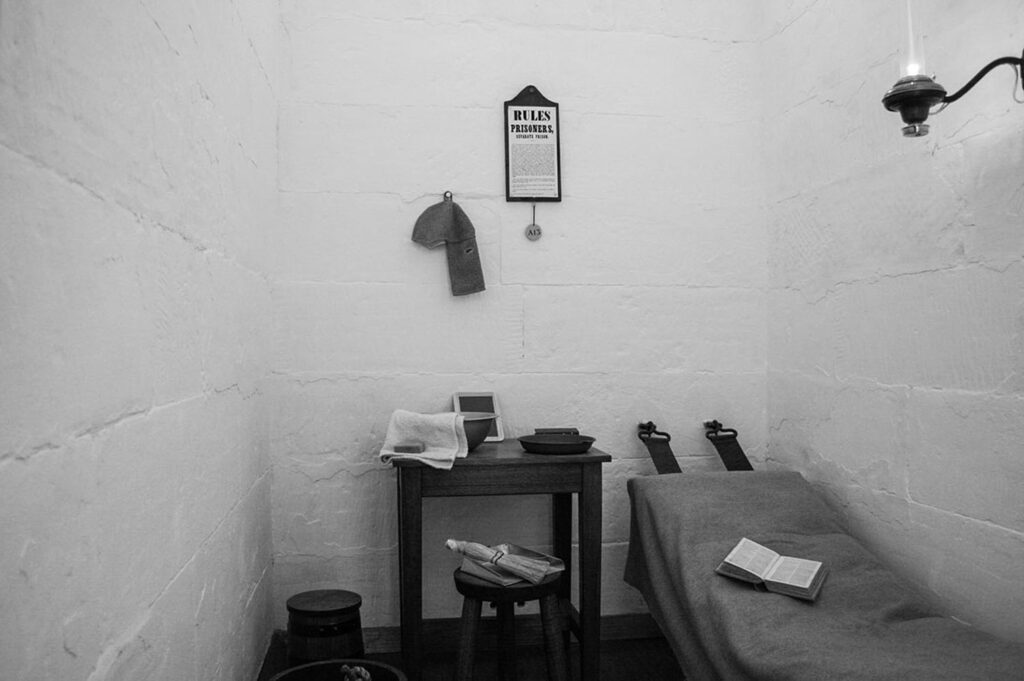

In the C Wing is where they held the most dangerous, violent and criminally insane individuals. People have reported they saw the ghost of John Gould, a criminal sent here after the attempted rape of a child. He appears in the small window of his cell, peering out hauntingly at the guests.
One of the saddest stories from the separate prison is that a young boy who was sentenced to death. It was very rare, even back then, that such a young child could have done anything serious enough to warrant a death sentence. Today, people report hearing the cries of a young boy at night time, just like the cries he was said to have made before his execution.
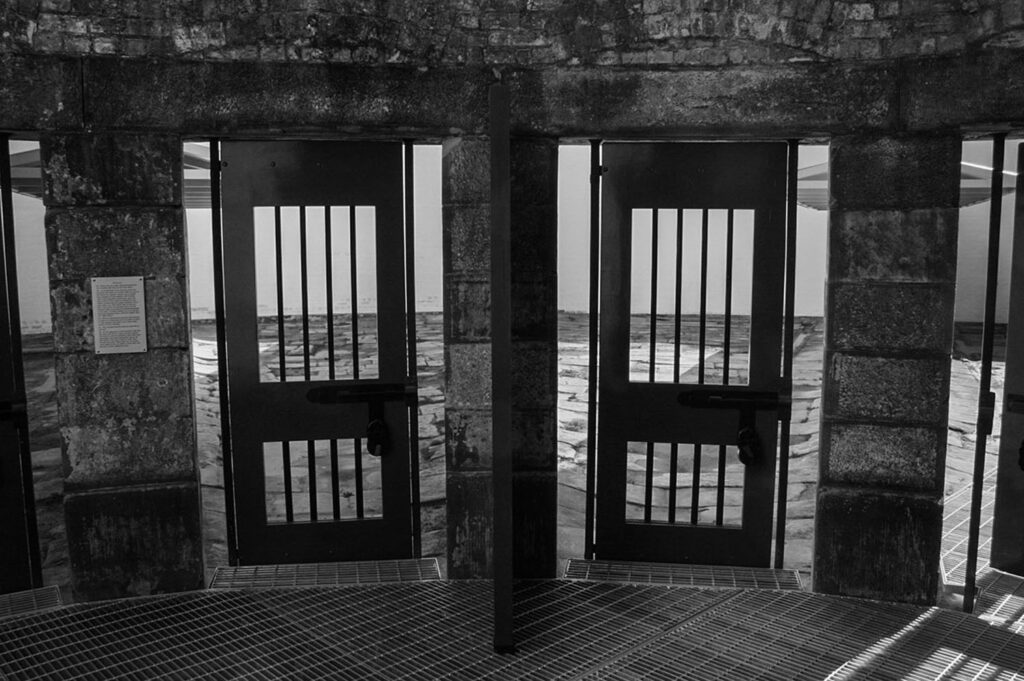
Penitentiary
It’s worth mentioning that not many ghosts are known to be seen inside the old Penitentiary. While many inmates suffered horrible fates, the prisoner who stayed inside the main Penitentiary were generally very well behaved. This part of the prison was truly for social reform. The prisoner slept in large dormitories where they could socialize with each other. They were given a chance to reform themselves while attending church and even learned many trades like shipbuilding, carpentry, and blacksmithing.

The Guard Tower
Standing at the Guard Tower, looking out over the rest of Port Arthur, there have been accountants of moans echoing throughout the tower. Apparitions of soldiers in their uniforms have appeared to guests. One guest even reported having their arm grabbed as they passed by.

Commandant’s House
The large, white-bricked building on the end of the peninsula belongs to the Commandant. Located on a slight incline, the house looks out over the bay and the entire prison complex. This was the first house built in Port Arthur and was made for the prison director, also called the Commandant. No doubt the Commandant was one of the most careless individuals, constantly putting prisoners, even the goodly ones, into such abominable environments. Inside, one of his rocking chairs is still there and is seen rocking back and forth without anyone sitting upon it. This is thought to be the spirit of the old Commandant. Still, obsessively watching over the colony all these years later. People have reported that if they try to take a picture of the chair their cameras being to malfunction or the images are extremely blurry despite the photographer remaining still.
Jetty
Near the Jetty Dock to Point Puer, keep your eyes open around the cottage for a young soldier. In 1840, Private Robert Young fell into the black waters in the middle of the night. He was on his way to deliver a doctor to the young boy’s prison. Despite all efforts to pull him from the water, he perished. Young is still seen on the cottage’s stoop, looking out over the dark waters. Some people report they saw the dark spirits pulling him into the waters when he died. Perhaps the spirit of Young keeps watch around the Jetty to ensure no one else suffers the same fate he did.
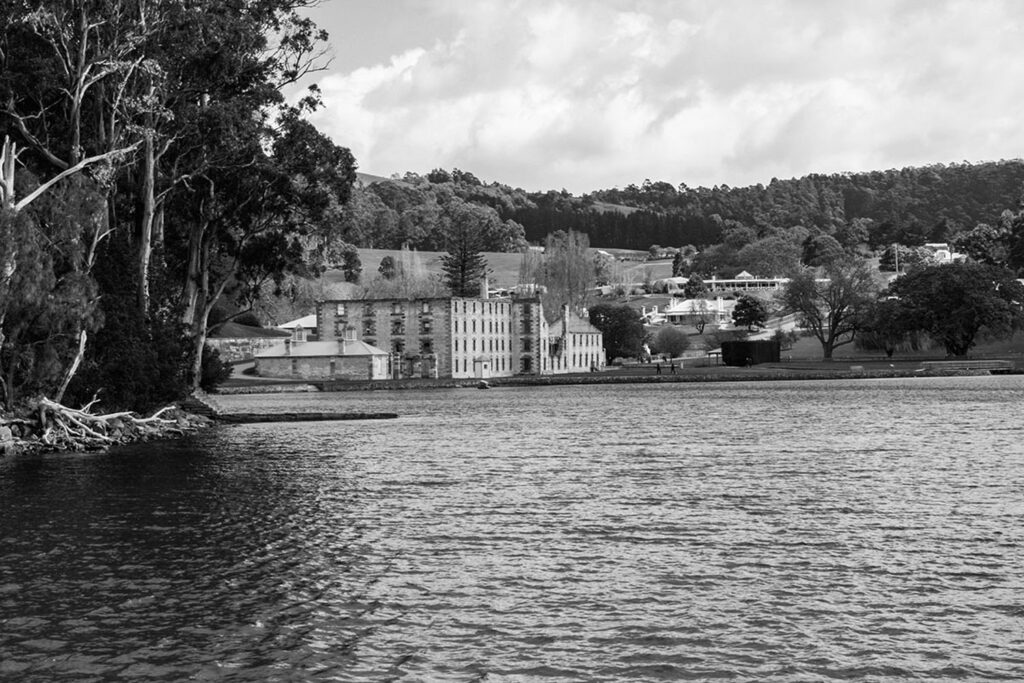
Isle of the Dead
Located off the mainland, we find the most haunting part of Port Arthur, the Isle of the Dead. This island is a scary place to be during the day and at night, especially when it gets quiet. It was here that the dead from the prison settlement were buried. Over 1,600 prisoners were buried here, along with workers from the prison. Only the workers were initially given marked graves, whereas the prisoners were just placed into unmarked mass burial sites. It is well known among spiritual beliver that someone who doesn’t receive a proper burial without a marked tombstone, will roam the earth. Endlessly searching for revenge and unable to take their eternal rest.
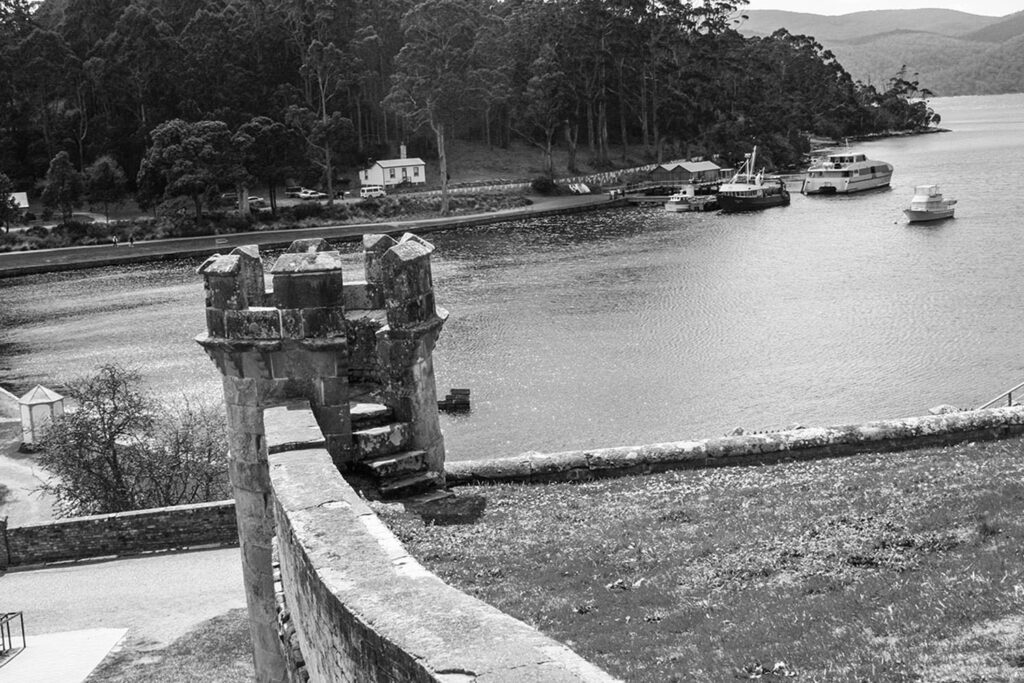
The Gravedigger of Port Arthur
It was customary for one of the prisoners to become the resident gravedigger. They was forced to live alone on the Isle of the Dead in a small wooden hut. Mark Jeffrey is the most infamous of all Port Arthur’s gravediggers. He was accused of manslaughter and sent to Port Arthur from Ireland. One day, there was a signal fire spotted on the mainland. Soldier’s went to see what was happening and the hut destroyed and Jeffrey in great distress. The gravedigger begged the soldiers to take him back with them to the mainland. He claimed to have seen the Devil. Jeffrey reported that the devil appeared to him, destroyed his hut and left Jeffrey shaken in pure terror. The gravedigger never recovered from the supposed attack and spent the rest of his days in the Asylum.
Point Puer Prison
Point Puer Prison was a separate island prison that held only the young offenders. It was thought that by keeping them far away from the mainland, the children wouldn’t be subject to the negative influences of the adult inmates. 3,000 boys were sent to the island, and while it was meant to house boys aged 14-17, there are records of boys as young as nine being sent here. Nothing remains of the prison today, except for the spirits of the young boys who perished on the island. People constantly report the sounds of children’s voices on the island, crying out in pain and screaming for help. But when people make their way to the island, they isn’t anyone there.
Hopefully, after reading through these stories, you can see why Port Arthur is one of the most haunted places in Tasmania, if not all of Australia. Even if you don’t believe in ghosts, there is no doubt that the treatment of the prisoners sent here was inhumane and that their tortured souls are more than likely still searching for peace. If you have the chance to visit Port Arthur, either during the day or attending one of their fantastic ghost tours, take some time to remember the spirits of all those who perished here and perhaps you might be lucky enough to spot one for yourself!
Happy Travels, Adventurers
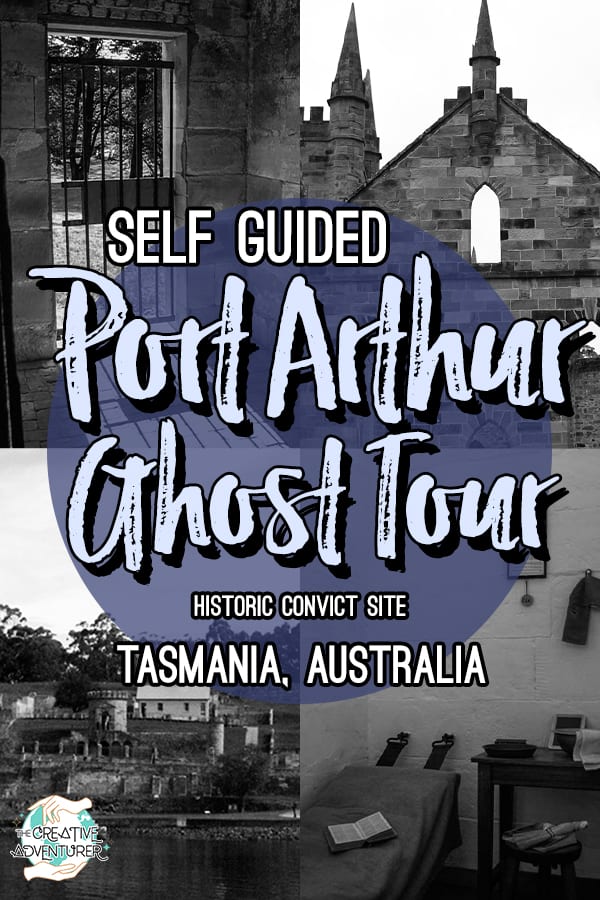
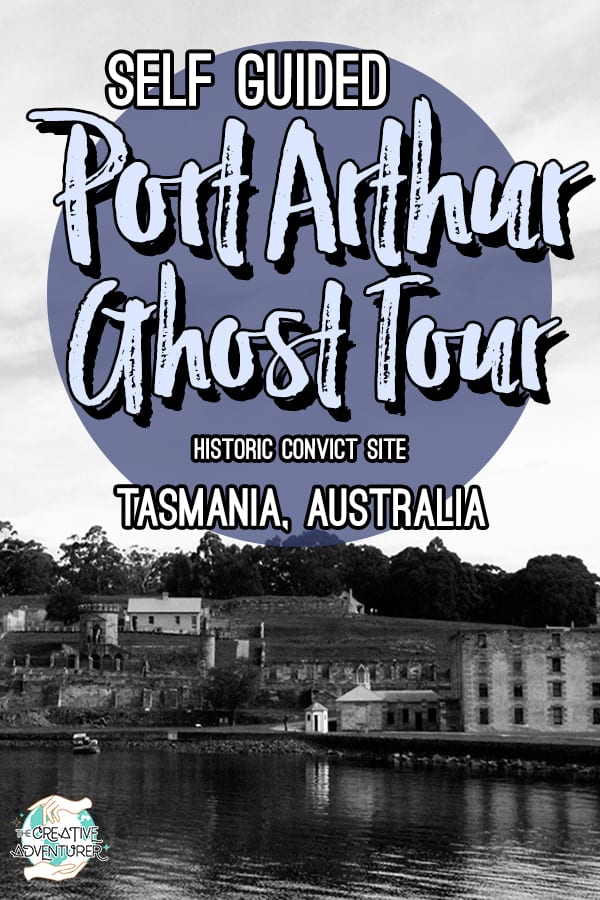

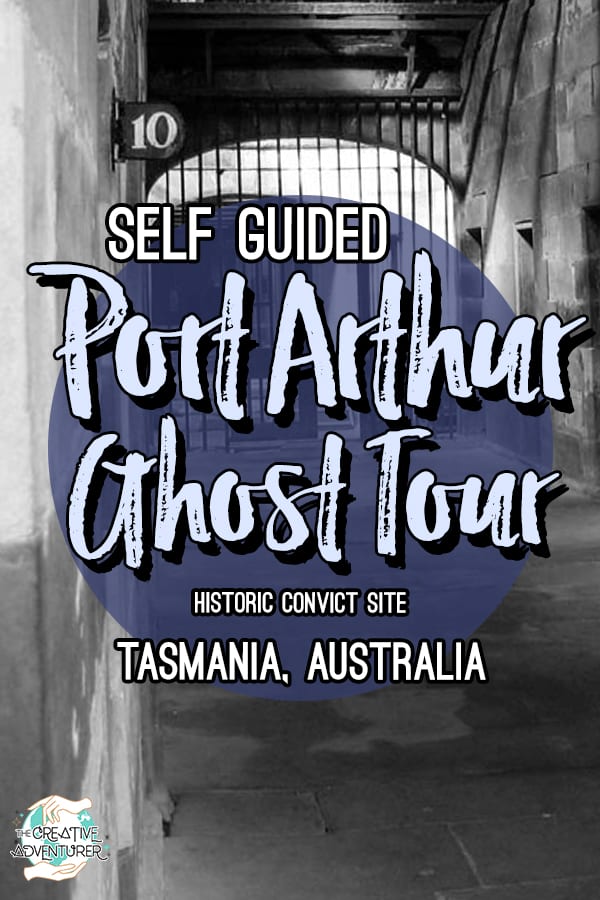
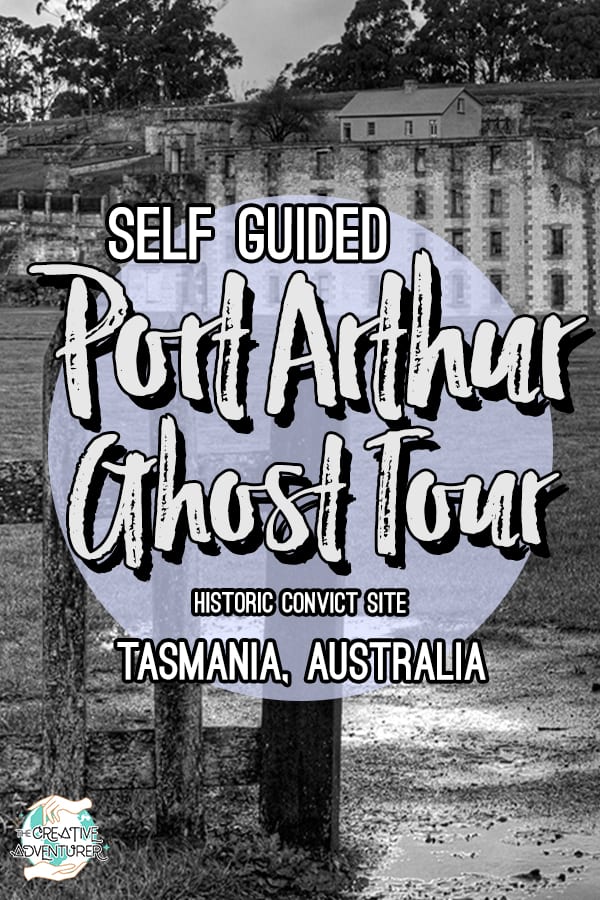



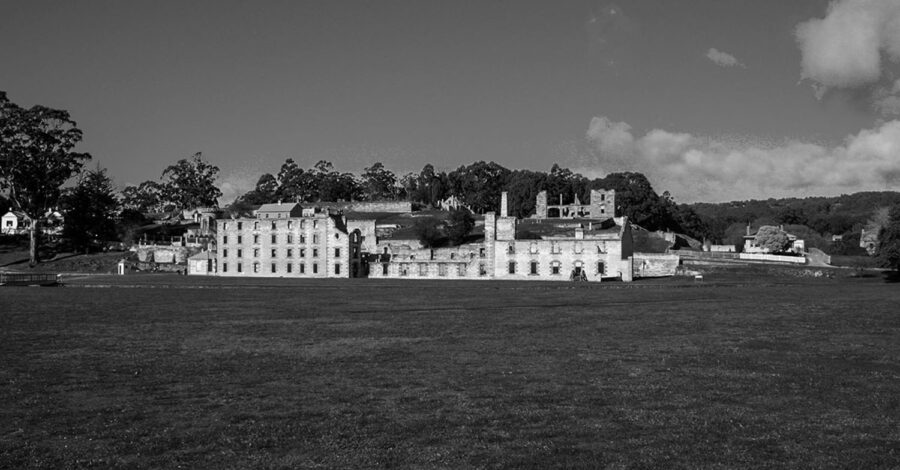


Leave a Comment